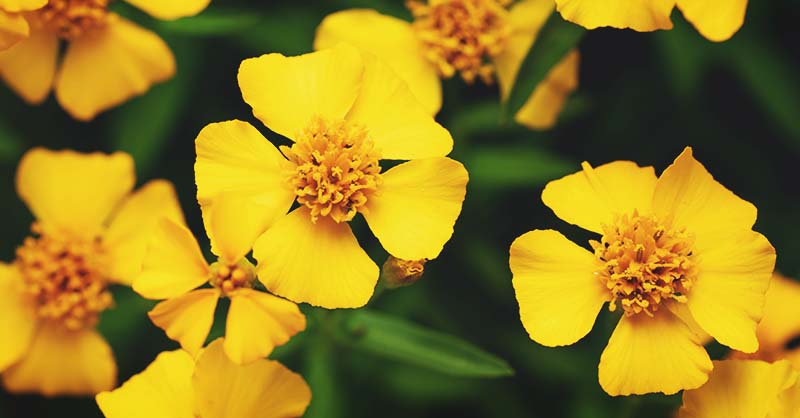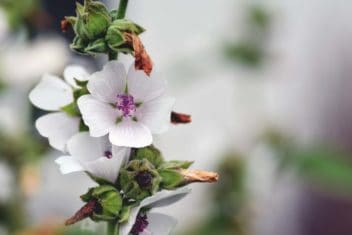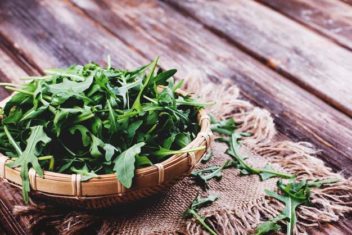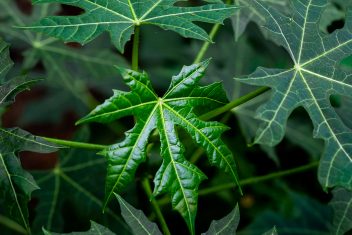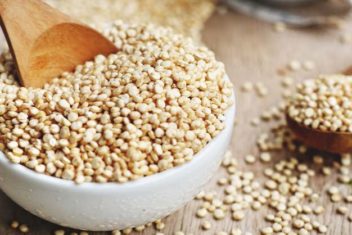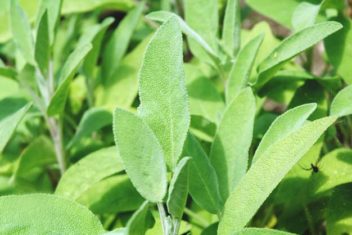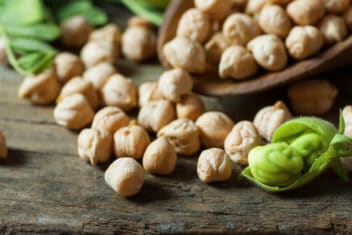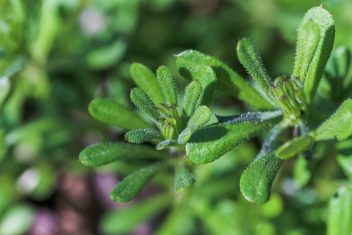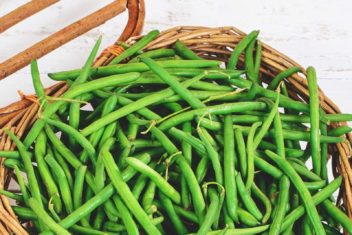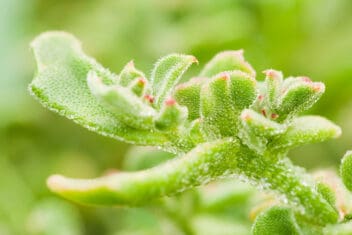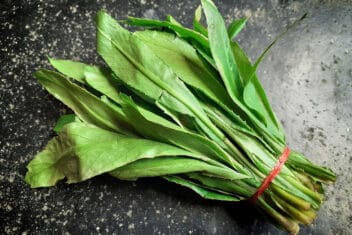Tarragon is a hardy perennial herb that may not be a staple in your kitchen – but it should be. Not only is growing tarragon one of the easier gardening challenges you can take on, but the herb has lots of uses, from the kitchen to the medicine cabinet.
Famous as a component in hollandaise and béarnaise sauces, the mild and slightly anise flavor of tarragon leaves will take your recipes to the next level. It pairs particularly well with fish, cheese and egg dishes. Tarragon also adds a nice flavor to beans or greens such as spinach. The sweet smell is reminiscent of fresh-cut hay.
Tarragon is known as “little dragon” from its Latin name of dracunculus. The name is believed to come from the shape of tarragons roots, which coil amongst each other like sleeping snakes. Tarragon was one of the medicinal herbs used by Hippocrates and was common in gardens of the Middle Ages.
This article will introduce you to growing tarragon and all the reasons you shouldn’t wait to plant it in your herb garden.
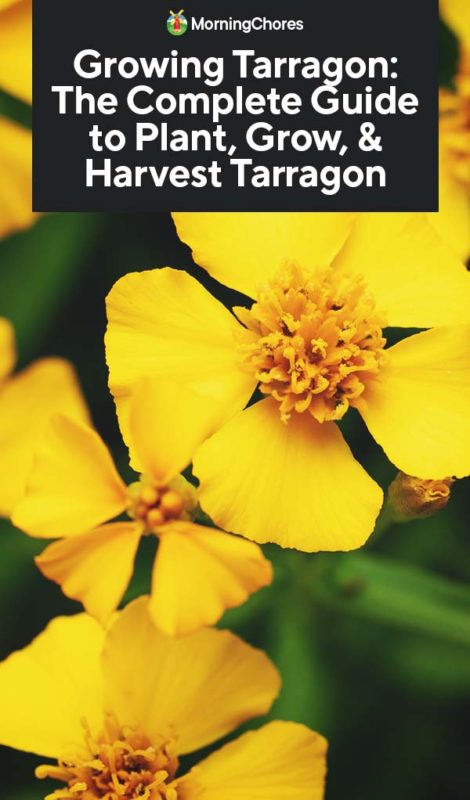
Tarragon Varieties
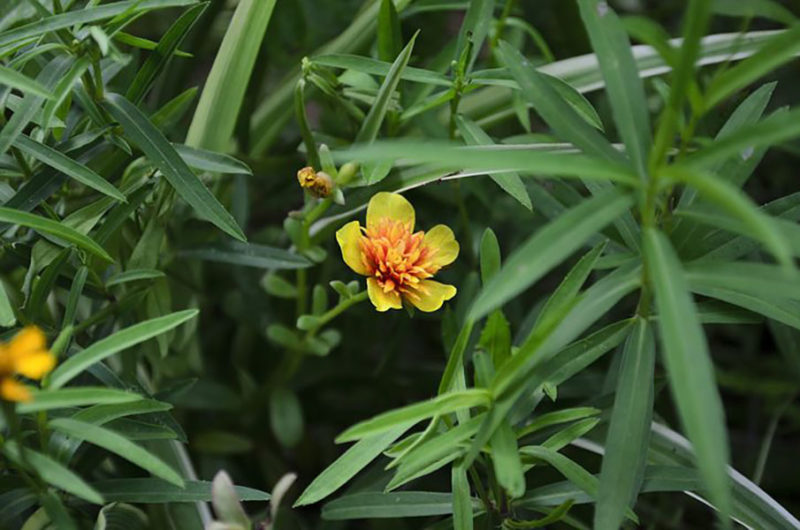
There are two distinct types of tarragon. The popular cooking herb is referred to as German or French Tarragon. The other, Russian Tarragon is not as tasty, but a beautiful addition to the garden.
German and French Tarragon (Artemesia Dracunculus Sativa)
This is the culinary variety used in cooking. Usually, it’s referred to as French, but you may also see it called German tarragon. This variety can only be grown from cuttings.
If your goal is to make delicious dishes using tarragon, then this is the variety for you. French tarragon has a high level of essential oils which makes it smell and taste wonderful.
Russian (Artemisia dracunculoides Pursch)
Russian tarragon’s leaves are more coarse and have less flavor than French tarragon. I’ve heard people say it tastes like grass, which is why many chefs consider the Russian variety to be substandard in the kitchen.
On the bright side, it does make seeds and is easier to propagate. The Russian variety can be used medicinally. The leaves are a lighter green, spikey and thinner than its popular stepsister French tarragon, but it’s still a nice visual addition to an herb garden.
Mexican Tarragon (Tagetes lucida)
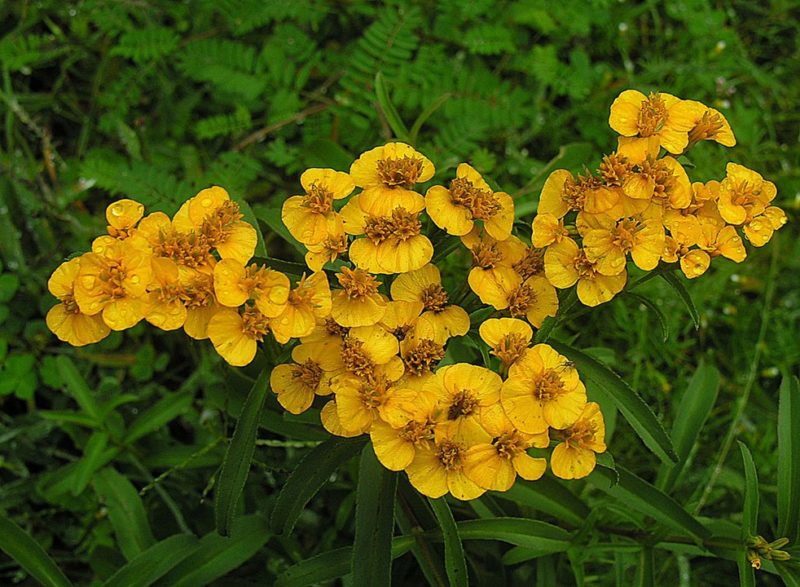
Mexican Tarragon is part of the marigold family. It’s a perennial in the deep south, and some people use it as a substitute for the French variety.
Planting Tarragon

Tarragon is best grown from cuttings. You can also purchase a plant at your local nursery.
Soil Requirements
Tarragon does best growing in loamy soil that is rich in compost with a pH level from 6.3-7.5. It does not like heavy soils, so add sand and well-rotted manure if you have heavy clay soil. If you have sandy soil, add compost to improve the texture. Tarragon needs well-drained earth.
Sun Requirements
Plant in full sun or part shade.
Zones
Tarragon is hardy and can be planted in zones 4-9.
Stem Cuttings
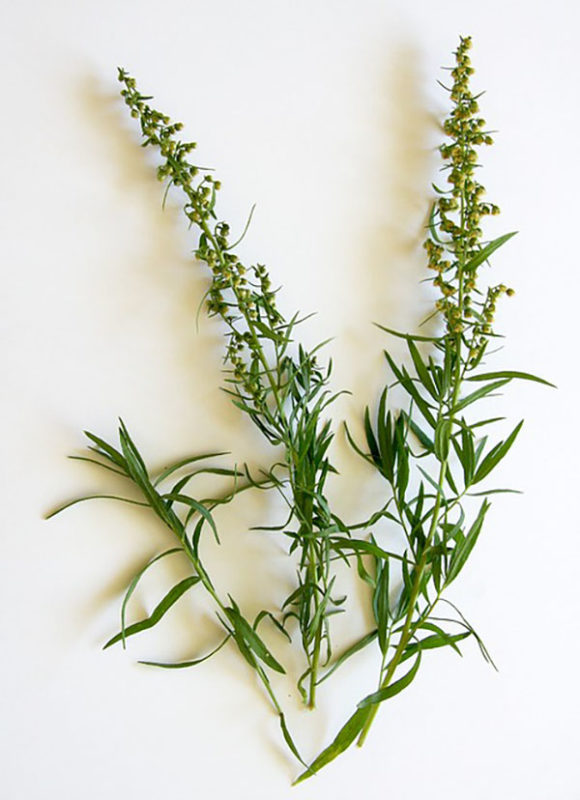
To propagate by stem cutting, place three four-inch cuttings in a six-inch flower pot filled with seedling soil mix. Make sure there are drain holes in the bottom.
Humidity is important so wrap a plastic bag around the flower pot. Place on a tray and put in a warm location.
Root Cuttings
Tarragon is well suited to root cutting as a method of propagation. Here’s the step by step method for root propagation
- Dig up the roots. This is typically done when plants are dormant.
- Snip roots that are about the width and length of a school pencil. You want your cuttings to be 3-6 inches long.
- Place your cuttings in a seedling flat filled with potting soil. You want to lay them horizontally in little trenches that are 1/2 inch deep.
- Mist them with a water bottle and cover with a plastic lid or a sheet of glass. You want them to maintain humidity.
- Check on them every day to see if they have developed sprouts.
- Once they sprout you can remove the plastic or glass cover but keep them moist.
- Transplant when they have made several sprouts and have root hairs growing.
Growing From Seed
You can grow Russian tarragon from seeds. French and German must be grown from cuttings or purchased.
Start seeds indoors in late spring before your last expected frost date. Germination rate is low so plan on placing four seeds per pot. Put the seeds on top of the potting soil and gently push them into the soil to provide good contact. You will want to cover the seeds lightly and mist to dampen the soil. Plants should start to emerge after 10-12 days.
Transplanting
Transplant tarragon after the danger of frost. Keep the soil moist until your herb is established.
Spacing
Choose a location that receives full sun and gets good air circulation. Plant 18-24 inches apart with 24 inches between rows. It’s a tall spindly herb, and grows up to three feet tall.
Container Growing
Well-drained soil is important to this herb, so tarragon thrives particularly well in raised beds or containers.
Caring for Tarragon
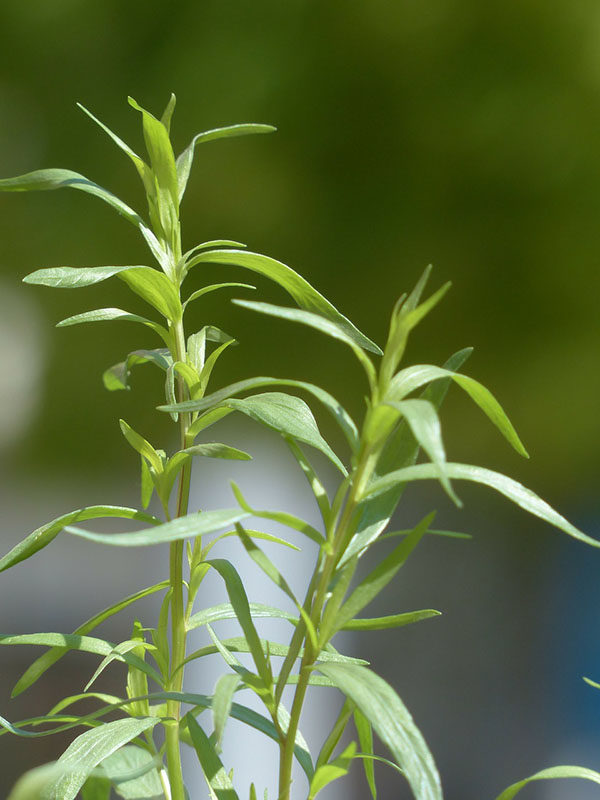
Watering
Don’t overwater tarragon as you will invite mildew problems. Once your young plants are established they don’t need much water. In fact, tarragon is a great herb for xeriscaping in the southwest. Water only if the soil around your plant has thoroughly dried out.
Mulch
Put a nice thick layer of mulch around your growing tarragon plants in the fall. This will help them deal with the changing temperature of winter. Mulch is especially important in northern climates.
Pruning
Tarragon has beautiful delicate pale green flowers. Pruning will ensure good leaf growth, so prune off the sterile flowers as they appear.
Division
Every three to four years you will want to divide your plants. Divide in early spring. Cut off the older, woodier roots. Keep the smaller roots that have shoots attached. You can replant those.
Place plants in four-inch pots with seedling soil mix. Mist with water and put the pot in the shade for two weeks. At the end of two weeks check to see if root hairs have developed. Once they have well-developed root hairs they can be planted out in the garden.
Fertilizer
Regular fertilizing is not needed for most herbs including tarragon. In the spring, pull back the mulch and add a one-inch layer of good compost. Then, 2 or 3 times during the growing season, give the plant some seaweed extract.
Too much nitrogen can actually lessen the concentration of the essential oils and reduce flavor, so be sure not to over-fertilize.
Problems and Solutions for Growing Tarragon
Tarragon has few problems and is generally resistant to insects and diseases. That said, there are a few things to watch out for.
Tarragon Rust and White Rust
Rust appears as yellow or white spots on leaves. It can stunt plant growth. Remove infected leaves and prevent it in the future by watering at the base of plants in the morning so that foliage can dry during the day.
Powdery Mildew
Powdery mildew is a white fungus that covers growing tarragon leaves. Remove and destroy infected leaves and spray plants with a fungicide.
Root Rot
Tarragon can contract root rot when it is overwatered or from fungus in the soil. Impacted plants will have mushy, black roots. Remove the plant from the soil, wash the roots and trim away any badly impacted roots. Add new soil to the hole where your plant was growing and replant.
Companion Plants for Tarragon
Try growing tarragon with chives and sage since they have similar growing needs. Tarragon can be paired with eggplant to help repel pests. Most insects dislike the smell. You can also grow tarragon with thyme, tomato, and pepper.
Don’t plant tarragon with endive or artichoke.
Harvesting and Storing
You can harvest the leaves at any time, but its ideal to pluck the tops of the plants just before flowering. This occurs 40-60 days after transplanting.
Cut a few springs and then wrap a rubber band around the end and store in a cool dark place for several days. Keep for up to two weeks in the crisper part of the refrigerator.
Tarragon is best used fresh but it can also be dried and frozen. To dry, air drying works best. Drying in a dehydrator or in the oven can reduce the number of essential oils and thus the flavor.
Medicinally, tarragon can treat indigestion, menstruation problems, and toothaches. It’s also a good source of potassium. Women who are pregnant or breastfeeding should not consume tarragon by mouth for medicinal purposes.
Cooking with Tarragon
Tarragon is found in lots of French cooking, especially sauces, chicken, fish, and egg dishes.
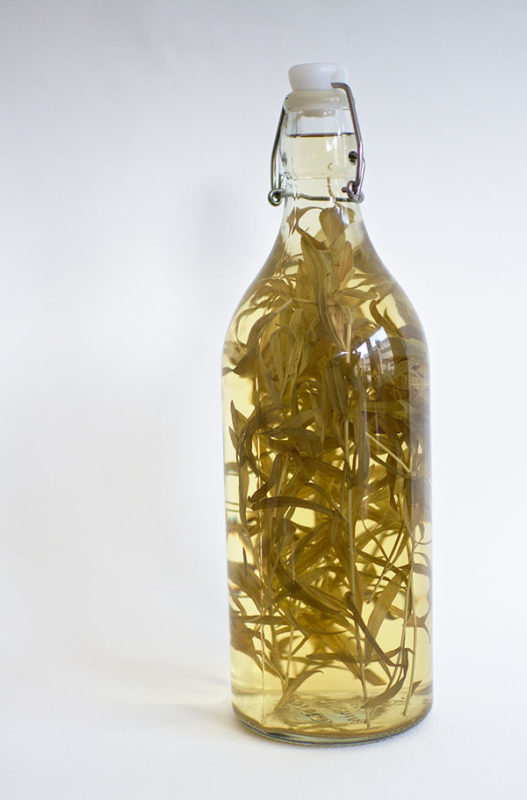
Tarragon has a light flavor. It works especially well in vinegar. Here’s how to make it:
- Harvest several fresh sprigs of tarragon.
- Using a rolling pin gently roll the leaves to release the essential oils.
- Place the leaves in a mason jar or any decorative jar with a tight lid.
- Pour white vinegar into your jar until it covers the leaves.
- Store in a cool dark place for three weeks.
- Remove the leaves with a strainer and leave the vinegar in the jar.
- Store for up to six months on a pantry shelf.
I also love this recipe from Gordan Ramsey for mushroom, leek and tarragon pasta.
This recipe lets you make an amazing Tarragon Cream Cheese:
Makes 1 cup
One 8 oz. package cream cheese, at room temperature
1/4 cup finely chopped tarragon
Freshly ground pepper
1 garlic clove or shallot
Place all the ingredients in the bowl of a food processor and blend until well mixed. Place in a serving bowl and enjoy.
If you haven’t tried growing tarragon before, now is the time. It’s is a fuss-free herb that allows you to expand your culinary options.

